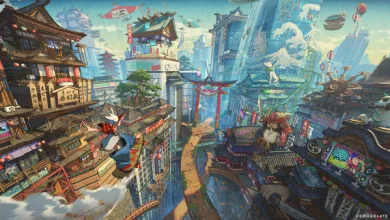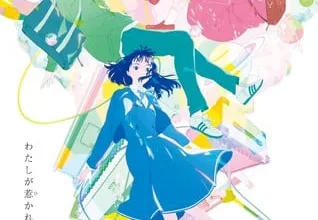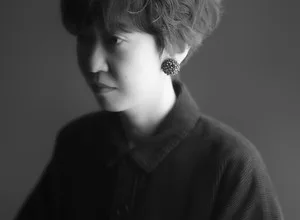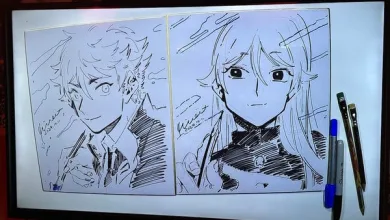A Bright and Colorful Adventure: An Interview with BAKERU Director Tadanori Tsukawaki
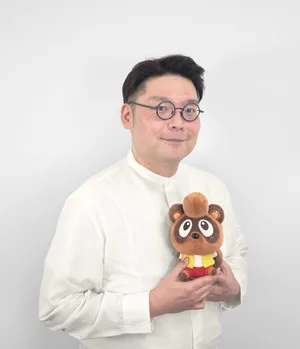
©Good-Feel All Rights Reserved.
While playing through BAKERU, I couldn’t help but reminisce about the 3D platformers that defined a large part of my childhood—Ape Escape, Sly Cooper, the list goes on. But as mentioned in my review, my focus eventually shifted from my own foundational gaming experiences to those of today’s kids. Especially those of my young nephews, who are always asking to take Bakeru on another adventure. With that in mind, it would be fair to say that Good-Feel’s tanuki hero has been on my mind quite a bit lately.
Lucky for me, this year’s Tokyo Game Show provided Anime News Network with the exciting opportunity to chat with BAKERU‘s director—Tadanori Tsukawaki of Good-Feel. We ended up talking about a wide range of topics—from the team’s dedication to satisfying movement, the game’s anime inspirations, its educational elements, and even giant robots for good measure.
There are many who have proclaimed BAKERU to be something of a spiritual successor to your team’s previous work. When you started work on BAKERU, what was your approach to making the game something those old fans would like while still appealing to the children of today?
TADANORI TSUKAWAKI: We didn’t take any special measures to make it particularly eye-catching, but we were mindful of ensuring that people would get the impression that this title is a bright and colorful adventure.
If there’s one thing we focused on, it was staying true to our own ideas and seeing them through to the end.
Trying to cater to all sorts of preferences can make it hard to know what’s right. Since this is a new IP, we approached it as a challenge, prioritizing our ideas and developing BAKERU with that mindset.
Speaking of today’s children, I’ve actually played a bit of the game with my young nephews. They had a blast with it, by the way. However, the experience made me wonder how you approach game design targeting different age groups. For example, a 10-year-old might have an easier time with BAKERU‘s controls than a 6-year-old would.
TSUKAWAKI: When it came to game design, we focused on keeping things simple.
We designed it so players wouldn’t need to manage complex stats or systems, making it intuitive enough to understand just by looking at it.
On that more intuitive level, we put a lot of effort into removing any frustration with the controls. We paid close attention to input response, aiming to make the game feel satisfying just by moving. In particular, we fine-tuned the combat so the attacks would come out even if you casually pressed the L and R buttons.
We believe that kids who aren’t good at action games will still find joy in moving Bakeru around, making it a great introduction to the action genre.
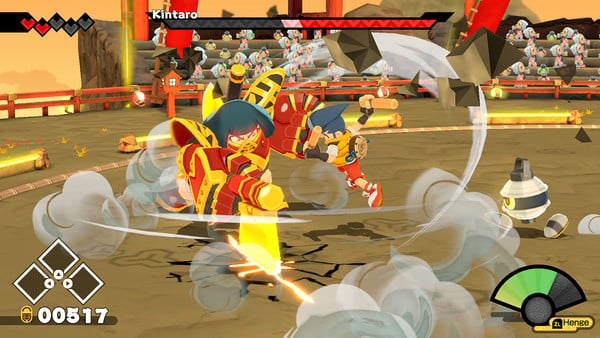
©Good-Feel All Rights Reserved. Licensed to and Published by Spike Chunsoft Co., Ltd.
On the topic of controls, how did you and the team settle on using L and R for Bakeru’s Haradaiko? There’s such a wonderful tactile feeling to it, especially when you get a drumroll going.
TSUKAWAKI: From the start of development, we were exploring the idea of independent actions for the right and left hands in combat.
Initially, we considered giving distinct roles to the right and left hands, but we optimized it to lower the difficulty, making it more accessible by allowing players to perform combos even with random inputs.
During that process, we also started thinking about the right motif.
Since the protagonist is a tanuki boy, the idea of him swinging around weapons like swords didn’t feel right, either from a design or visual perspective. So, we explored non-weapon motifs and eventually landed on using the drum.
The idea of wielding a drumstick in each hand is simple to understand both in terms of gameplay and logic. Plus, using the drum as a shield seemed like it would meet the needs of other combat mechanics.
In Japan, there’s the phrase ‘tanuki drumming on its belly,’ which ties in well with the character, and drums have long been believed to ward off evil spirits. So, we thought a drum that only affects evil enemies would be a fitting weapon. Since drums are a familiar instrument worldwide, we also felt it would resonate with players overseas.
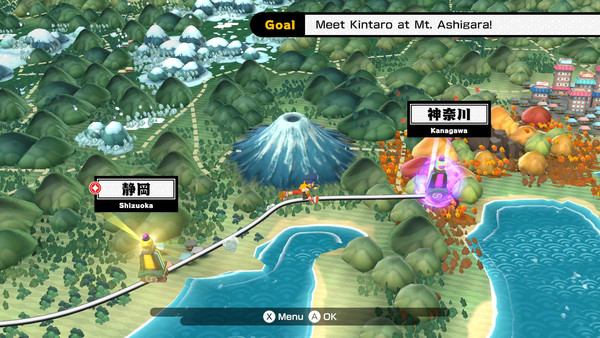
©Good-Feel All Rights Reserved. Licensed to and Published by Spike Chunsoft Co., Ltd.
With Bakeru’s adventure taking him throughout all of Japan, did the team go on any adventures of their own for research? If you did, were there any particular locations that really stick out in your mind?
TSUKAWAKI: We weren’t able to go on research trips for development, but I did take countless ‘trips’ using Google Maps. I spent a lot of time researching various places to understand the landmarks and grasp the unique characteristics of different regions in Japan, gathering ideas as I went. There was a period when I would open Google Maps and ‘travel’ anytime I had free time.
After development started, I went on a few personal trips within Japan for research and to expand the image of what we were creating. Some of the places I visited were Shirakawa-go in Gifu Prefecture, Ginzan Onsen in Yamagata Prefecture, and Mount Fuji.
The place that left the biggest impression on me was Mount Fuji. I went to see it from various locations, and seeing it in person left a strong impression. (I recommend viewing it from Nihondaira—it’s spectacular!)
With that experience in mind, we decided to feature Mount Fuji in a key event toward the end of the game.
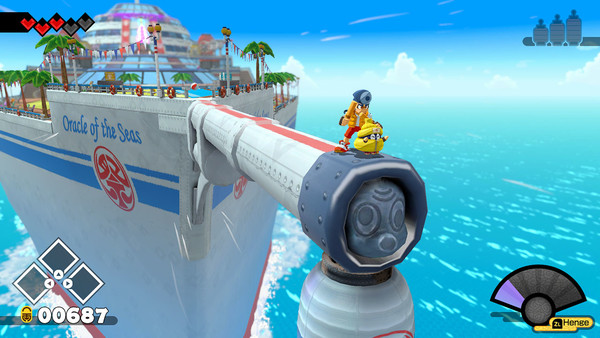
©Good-Feel All Rights Reserved. Licensed to and Published by Spike Chunsoft Co., Ltd.
I absolutely loved searching for Scoop and being rewarded with a new Japan fact every time I found him. How did you and the team go about sourcing all of these facts? I was blown away by how many there are.
TSUKAWAKI: The entire team worked together to develop the trivia content. With members hailing from different regions, we pooled our knowledge of local trivia and fun facts as a group.
Japan is full of fascinating trivia, and because the game takes place across the country, we wanted to weave these fun tidbits into the gameplay. That’s why we included the trivia collection feature.
When selecting the trivia, we aimed to avoid dry, textbook-style facts. Instead, we focused on lighthearted, fun bits of information that you don’t need to know but make you think, ‘Oh, that’s cool!’ when you do.
Was there a conscious decision to introduce educational elements into the game? With Scoop’s facts, the souvenirs, and the telling of key folklore, I could see kids in the West learning so much about Japanese culture while playing the game.
TSUKAWAKI: While BAKERU wasn’t designed as an educational experience about Japan, we hope players will enjoy its unique version of the country and maybe even feel inspired to learn more.
We especially hope players from overseas will be motivated to explore different parts of Japan.
The stages are based on real locations from various prefectures, with some modeled after well-known tourist spots and scenic areas. Since the world map reflects Japan, players might even start recognizing certain landmarks. And for those familiar with Japan, you may notice stages or mechanics influenced by actual places.
If you ever get the chance to travel to Japan, it’d be great to think, ‘This is the place that was a stage in BAKERU!’
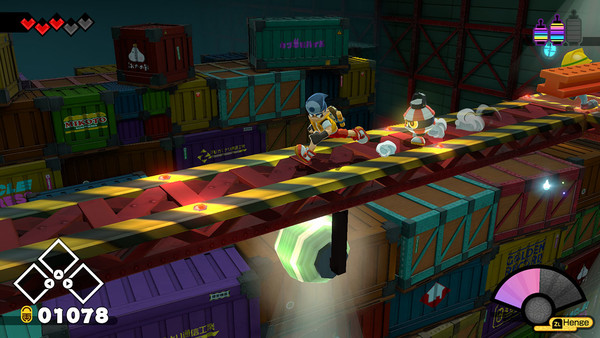
©Good-Feel All Rights Reserved. Licensed to and Published by Spike Chunsoft Co., Ltd.
I have to admit, I ended up getting a little emotional while playing through BAKERU. That’s because it reminded me a lot of the games I played as a child. Are there any games from your childhood that you took inspiration from while developing the game?
TSUKAWAKI: I think every 3D platformer I’ve ever played has been a source of inspiration. In particular, Super Mario 64, which was what made me want to pursue a career in the game industry, is at the core of my experience with 3D action games.
In terms of world-building, I also drew inspiration from anime. The concept for BAKERU‘s world is based on Japanese fairy tales and legends. When I was a kid, there was a TV anime called Manga Nippon Mukashi Banashi that I loved. It featured different stories every week, with each short episode using a different art style. I’ve always wanted to create a world where fairy tales cross over, and that idea stuck with me.
For this project, I was asked to create a game set in Japan, which I felt aligned perfectly with the concept. That’s how I decided to use this idea as the foundation for the world of BAKERU.
Speaking of childhood favorites, where did the concept for the Bunbuku’s Tokusatsu Mode come from? I couldn’t help but see shades of Tetsujin 28 and Giant Robo in the giant robot battles.
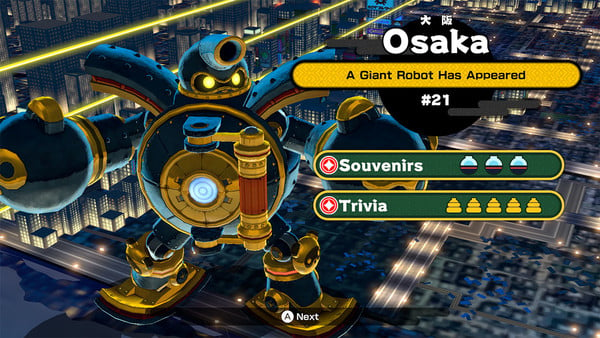
©Good-Feel All Rights Reserved. Licensed to and Published by Spike Chunsoft Co., Ltd.
TSUKAWAKI: The idea behind Bunbuku’s special attack mode came from wanting to add something to the game that we couldn’t express during regular battles. Plus, let’s be honest—robot battles are just exciting!
In terms of game mechanics, we designed the robot battles to feel heavy and powerful, rather than fast-paced, so we went with a more bulky and weighty design. As you pointed out, I was definitely influenced by shows I personally like, such as Tetsujin 28 and The Big O.
The first robot battle in Osaka, featuring a giant robot among the skyscrapers and illuminated by searchlights, was directly inspired by Tetsujin 28.
With the recent release of BAKERU and a slew of other fantastic 3D platformers, do you think the genre might be slowly returning to the prominence it had in years past?
TSUKAWAKI: Both in the past and now we’ve seen incredible 3D platformers released, and I truly believe the future of this genre is bright.
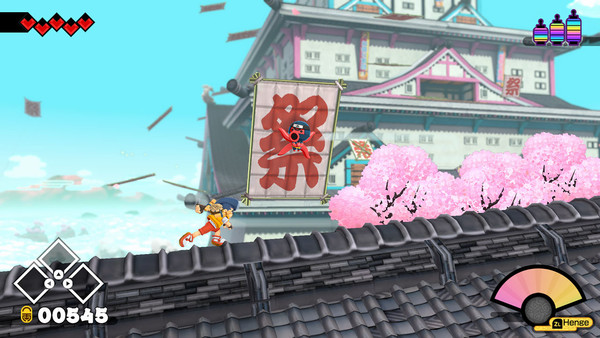
©Good-Feel All Rights Reserved. Licensed to and Published by Spike Chunsoft Co., Ltd.
Finally, if you were to define “Good-Feel” in the dictionary, what would it mean to you? For me it’s something nostalgic yet satisfyingly tactile in the case of BAKERU.
TSUKAWAKI: I think of Good-Feel as the place where I gained all of my career experience as a game developer.
I joined Good-Feel as the first artist when the company was founded. Since then, I’ve worked on various titles as a lead artist and art director, handling character design, concept art, and more. Through the development of each title, I gained valuable experience as an artist while also learning about game design techniques through interactions with external companies, which has helped me perform my role as a director today.
Disclosure: Kadokawa World Entertainment (KWE), a wholly owned subsidiary of Kadokawa Corporation, is the majority owner of Anime News Network, LLC. One or more of the companies mentioned in this article are part of the Kadokawa Group of Companies.
Source link
#Bright #Colorful #Adventure #Interview #BAKERU #Director #Tadanori #Tsukawaki

